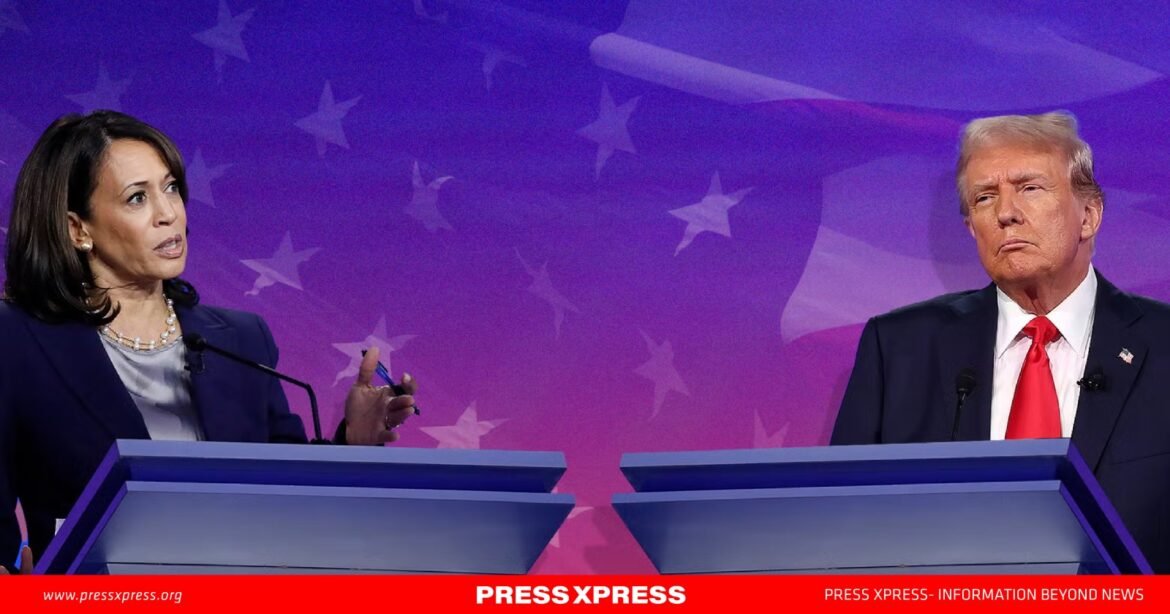In the final stretch of the US presidential election, both candidates show each other harsh fingers. But how do they try to attract voters into their respective camps?
To analyze theoretically the influences driving potential victory for the 2024 U.S. presidential election candidates, we must compare Donald Trump’s “America First” approach with Kamala Harris’s outreach to Gen Z voters. Both candidates bring unique platforms that reflect the current polarized political landscape, aiming to captivate voters through divergent visions.
Trump’s rallying cry to prioritize U.S. interests has resonated with a significant base since 2016, while Harris seeks to engage younger voters whose concerns align with progressive and global perspectives.
Trump’s “America First” Strategy: Nationalism and Economic Prioritization
Trump’s “America First” approach has, from the outset, been centered on reinforcing U.S. economic independence, security, and sovereignty. This approach played a substantial role in his 2016 victory and remains a cornerstone of his platform. His camp focuses on limiting international obligations and favoring policies that purportedly protect American industries and workers and continues to appeal to its base, which is largely made up of older, conservative voters. This group values economic nationalism, reduced immigration, and opposition to multilateral agreements perceived as weakening U.S. standing.
Economic Independence and Job Protection
Trump’s focus on reshoring jobs and manufacturing, withdrawing from international agreements that he claims hurt American industries, and imposing tariffs on imports to protect U.S. markets could attract working-class and middle-class voters. His record in office demonstrates a commitment to policies that appeal to economic self-sufficiency, even amid critiques of trade wars and tariffs that increased costs for U.S. consumers and strained foreign relations.
Immigration and National Security
Immigration remains a central component of Trump’s strategy, tapping into concerns over job competition and cultural shifts. By promising stricter immigration controls and continuing to voice support for building the border wall, Trump reinforces his narrative of protecting the U.S. from perceived external threats. His commitment to increasing defense spending and advocating a strong military presence aligns with voters who prioritize national security, a traditionally conservative stance that appeals to his base.
Critiques of Multilateralism
Trump’s skepticism toward multilateral institutions, such as NATO and the United Nations, speaks to his “America First” mantra. His base sees these organizations as hindrances to U.S. sovereignty and autonomy. By positioning the U.S. as a leader who does not bow to international pressures, he appeals to those who see the country as an unmatched global power, aligning with voters disillusioned by globalization and the outsourcing of American jobs.
Countering the Rise of China
Trump has continually portrayed China as an economic adversary, a sentiment that resonates with voters concerned about the growing influence of China in global markets and its impact on American manufacturing. His stance includes imposing tariffs on Chinese goods and challenging intellectual property theft, asserting that his policies safeguard American industries and tech innovation from China’s economic reach.
Kamala Harris’s Gen Z Outreach: Targeting Progressive Values and Diversity
In contrast, Kamala Harris aims to reach a younger demographic through policies that focus on social justice, climate action, and inclusivity. Gen Z voters, who are growing into a significant voting bloc, largely align with progressive policies and are passionate about issues such as racial equality, climate change, and student debt relief. Harris’s approach seeks to address these concerns directly, leveraging her multicultural background and history of advocacy to connect with diverse communities.
Climate Change and Environmental Justice:
For Gen Z, climate change is a pressing existential threat. Harris’s platform strongly emphasizes green policies, supporting renewable energy initiatives, and pushing for comprehensive climate action plans. Gen Z voters prioritize sustainability, and Harris’s track record, including her involvement in the Green New Deal, could mobilize this group. By aligning with environmental justice, she signals her commitment to the future that young voters envision.
Racial and Social Justice:
Harris’s experience as a former prosecutor has been both an asset and a liability, yet her efforts to support criminal justice reform and her dedication to racial justice appeal to progressive young voters. Gen Z voters expect leaders to address systemic inequalities, and Harris’s policies—such as police reform and social equity programs—target this expectation. Her emphasis on inclusivity resonates with a generation that is the most diverse in U.S. history.
Student Debt and Economic Opportunity:
Economic hardships and student debt remain central issues for young Americans. Harris’s stance on student debt relief and affordable education reflects Gen Z’s economic concerns, especially as college costs continue to rise. By promoting policies that aim to reduce the financial burden on students and increase job opportunities in emerging sectors, she positions herself as a candidate committed to a more accessible and equitable economy.
Technology and Data Privacy:
Gen Z voters, growing up in the digital era, are concerned with data privacy, technology ethics, and misinformation. Harris has voiced support for stricter regulation on tech companies and data privacy protection. Her focus on responsible technology use and accountability for tech giants aligns with younger voters’ concerns about how technology impacts their lives and livelihoods.
Conclusion
The real influence driving victory in 2024 may well depend on each candidate’s ability to engage and mobilize their core voters effectively.
If Trump can reinforce his narrative of an “uncompromising” America amid economic and security concerns, he could sustain support among conservative voters. Alternatively, if Harris can tap into the concerns of Gen Z and younger Millennials—voters passionate about social justice and climate action—she might sway the balance.
Ultimately, the race reflects two distinct paths for America’s future, with each candidate struggling to prove that their approach will shape a stronger and more unified nation.


